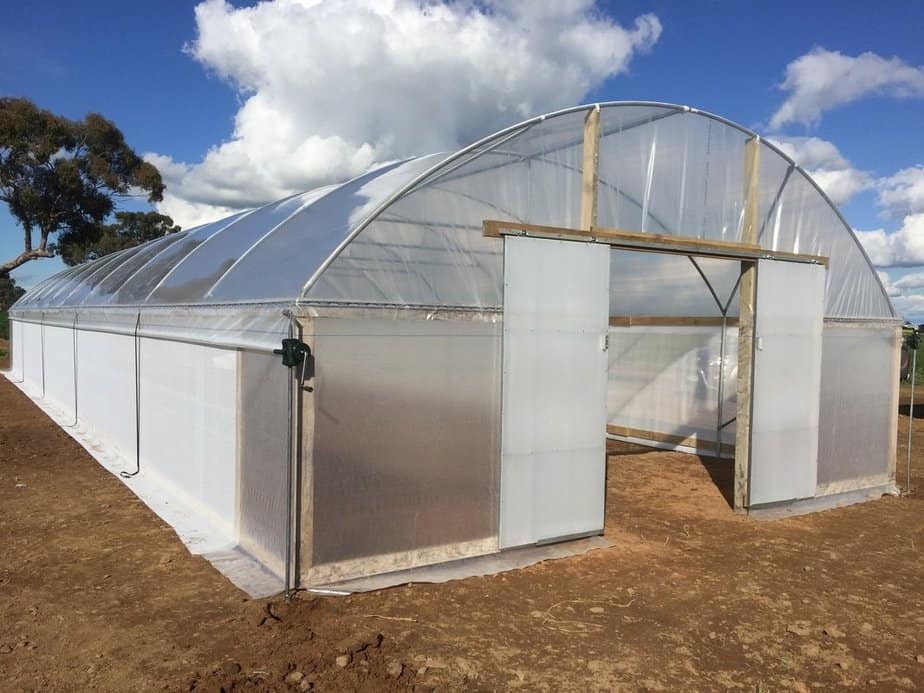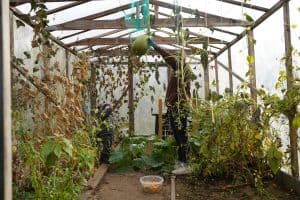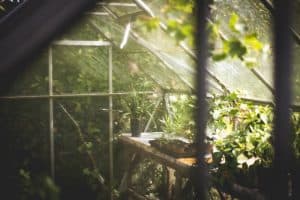So, you’re committed to a greenhouse but you don’t know with what you want to cover the exterior. Obviously paned windows have that sex appeal, but they also have a steep price tag.
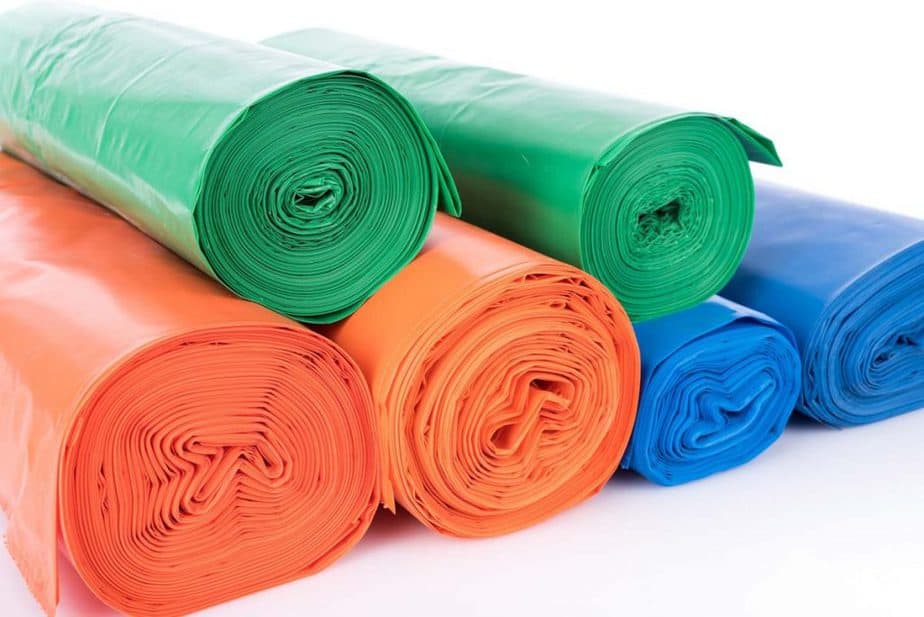
How about polyethylene plastic for greenhouses? Not only is it significantly cheaper than a traditional greenhouse covering, but – in certain climates and budgets – it’s the preferable choice. So, let’s learn about polyethylene plastic for greenhouses together and get your gardening oasis going strong.
About Polyethylene Plastic Greenhouse Glazing
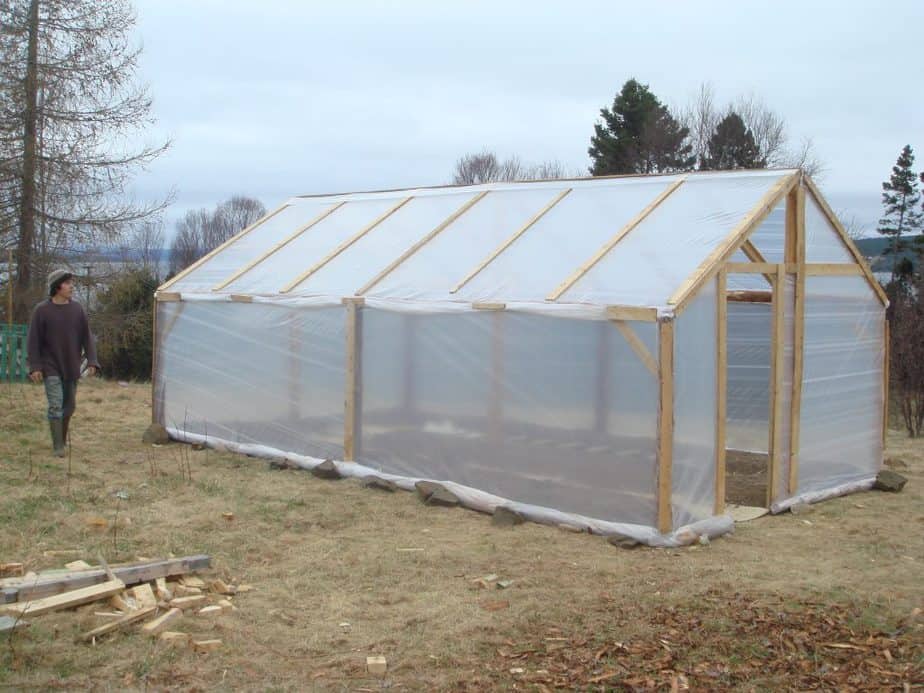
A greenhouse’s transparent exterior is referred to as the “glazing” or “covering” of the greenhouse. Nope, not the “windows” and definitely not the “walls.”
There are a wide variety of materials one can use to build a greenhouse. The material that is best for your greenhouse will depend on your climate, budget, type of constructions, and more.
Interested in learning all about more types of glazing? Check out our extensive overview of the Best Materials for Greenhouse Coverings.
About Greenhouse Polyethylene
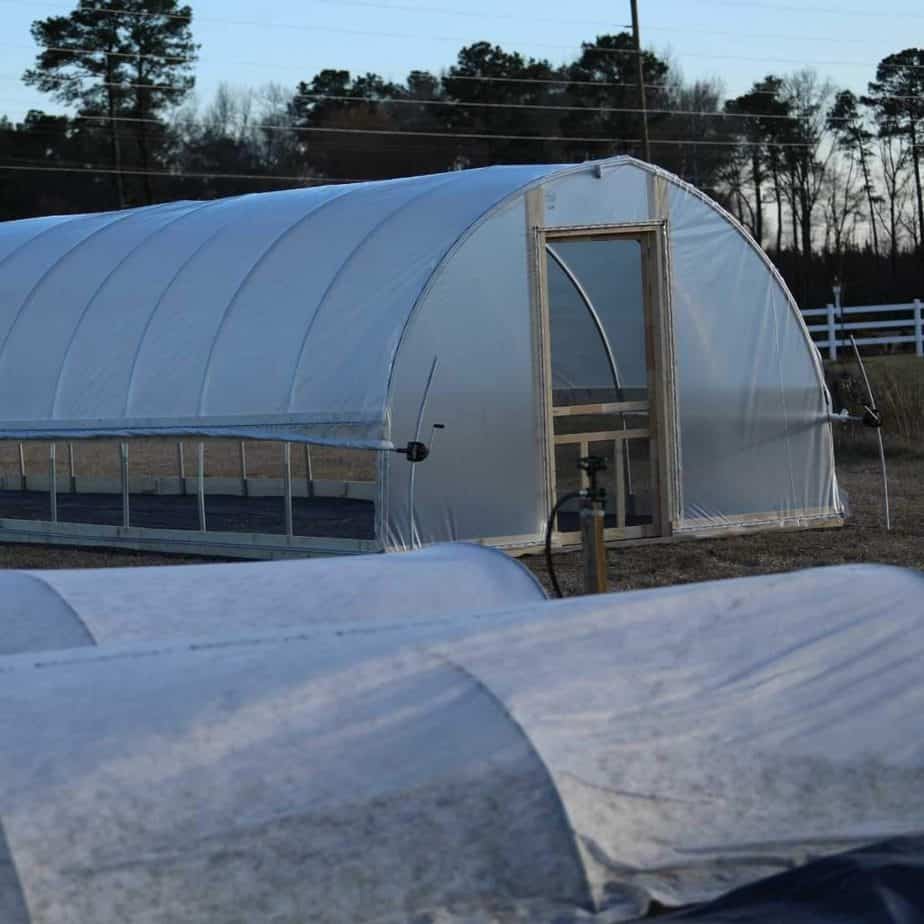
The specific type of polyethylene (commonly called “PE” or just “poly”) used for your greenhouse glazings is PE film. Much like plastic cling-wrap you may use in the kitchen, PE film is flexible, lightweight plastic that comes in giant rolls…that could cover the biggest left-over salad on the planet.
Polyethylene is a plastic polymer. It’s an extremely common plastic, found in everything from plastic shopping bags to toys.
It’s a thermoplastic material, which means that it can withstand a lot of heat before melting (or, if we’re being scientific about it, “liquifying”)—up to around 110oC or 230oF.
Polyethylene is a relatively atypical choice for home greenhouse growers; it’s used more for seasonal commercial greenhouses or hoop houses. But it may suit your needs—read on to find out.
What About Polycarbonate?
“The other poly.” Polycarbonate panels are another popular and much more expensive option for greenhouse glazing. While the words sound similar, these two plastics are quite different. Polycarbonate for greenhouses is sold in thick, corrugated panels.
Pros and Cons of Polyethylene Glazing
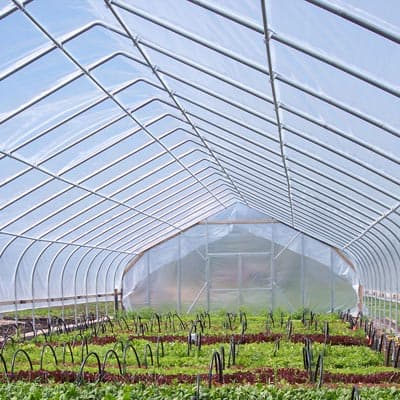
The Good
- Cost
- Installation & Versatility
- Light transmission
- Repairable
The Bad
- Aesthetics
- Durability & Weather Resistance
- Longevity
- Eco-friendliness
Let’s look at each point to help determine if poly film is right for your greenhouse.
Pros
Low Cost
Polyethylene film is the cheapest option to cover your greenhouse, by far. But as you read on, you’ll see why.
Easy Installation & Versatility
Because polyethylene comes in flexible rolls of materials, it’s a breeze to work with. It’s lightweight, bendable, and relatively forgiving.
Installation is made simple because PE film is so easy to cut to the size you need and shape to your greenhouse’s style. This is why PE is used so often for commercial hoop houses.
Remember that PE is thin and not incredibly sturdy, so don’t be too rough on it as you install, or you’ll get rips and tears before you even have a greenhouse.
Good Light Transmission
Compared to glass, of course, PE isn’t a strong light transmitter. But compared to other plastic greenhouse glazing options, polyethylene does well with light transmission.
Repairable
Although PE sheeting is prone to damage and degradation, it is quite easy to repair those minor tears and holes.
Grab some poly repair tape right when you buy the rest of your greenhouse materials so you’re already ready to extend the lifespan of your PE glazing.
Consider the cost and effort it takes to repair a cracked polycarbonate piece or (gasp!) a broken glass pane. Comparably, PE wins when it comes to repairability. Compare those costs with those associated with a more traditional greenhouse.
Cons
Aesthetics
It ain’t pretty, folks. But hey, that’s why it’s your backyard greenhouse and not your front yard greenhouse.
Durability & Weather Resistance
PE film is, as you may have guessed, is prone to tears and can be a bit flimsy.
Damages Easily
Cats, dogs, falling branches, big-clawed birds, hail, flying baseballs, flying pigs, and other everyday outdoor hazards can damage poly film in the blink of an eye.
You can find some thicker, more durable polyethylene film on the market, which will be more expensive per square foot. Be sure to look for greenhouse or industrial grade PE film when you purchase.
Not Very Sturdy
Wind can also become an issue for a greenhouse made out of glorified plastic wrap. Especially because many PE greenhouses also use a lightweight material like PVC pipe for frames. Strong gusty winds can damage and even displace a PE greenhouse.
If you live in a feisty, stormy climate, you can see why this type of glazing might not be the best choice for you.
Longevity
Over time, even tear-free polyethylene will wear down as it is continually exposed to the elements, becoming yellow and brittle over time.
If you are using poly film for your year-round greenhouse in a variable climate region, expect to replace it every two or three years.
That’s another reason why polyethylene is more frequently used for seasonal greenhouse covering. It can be rolled up and reused next season, extending its lifetime.
Eco-friendliness
It goes without saying, but we need to talk about it anyway.
Almost every plastic material is created using non-renewable natural resources, namely petroleum or natural gas. (Yes, there are “plastics” being made from organic plant material but these aren’t technically plastics, and they sure aren’t strong enough yet to build a greenhouse.) And there’s no good way to sustainably dispose of your old or damaged PE film.
That said, the world is inventing brilliant new ways to recycle plastic products, including for construction materials. I have yet to find an affordable, accessible recycled polyethylene sheeting that could reasonably cover a greenhouse.
Moderate Heat Retention
“Moderate” doesn’t sound all that bad… But compared to thicker plastic glazing like polycarbonate, PE, it’s not an impressive designation.
One way to increase heat retention in your polyethylene greenhouse is to double-up the layer and create a two-wall PE structure.
Yet another reason polyethylene greenhouses are often used seasonally: in the summer!
Tips for Polyethylene Film Use

Convinced that PE film is right for your greenhouse? Here are a few quick tips to maximize its potential.
- Choose the right thickness
- As mentioned above, the thicker the sheeting, the more durable and the more heat-retaining. Choose what millimeter thickness is right for your climate, and perhaps extend the lifetime of your greenhouse covering, too.
- Use UV protection
- UV rays are a major factor of PE deterioration. Buy a UV-protected PE sheeting to extend its life.
- Anchor your greenhouse
- Especially if you are using PVC pipe to build your backyard greenhouse (read how to do that here!), consider how you can anchor the greenhouse to the earth. Even if it doesn’t get very windy where you live, it’s nice to have that peace of mind.
- Consider its post-greenhouse life
- What will you do with your PE sheeting once its too damaged or yellowed to continue serving as greenhouse glazing? Are you a builder or homesteader with another potential use for this otherwise landfill-destined material?

